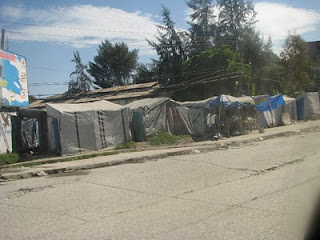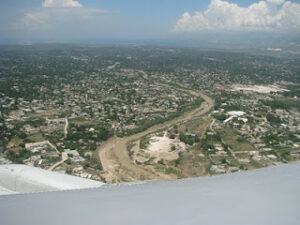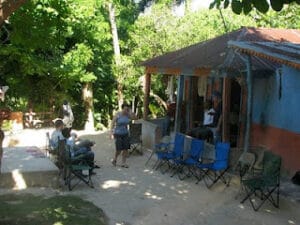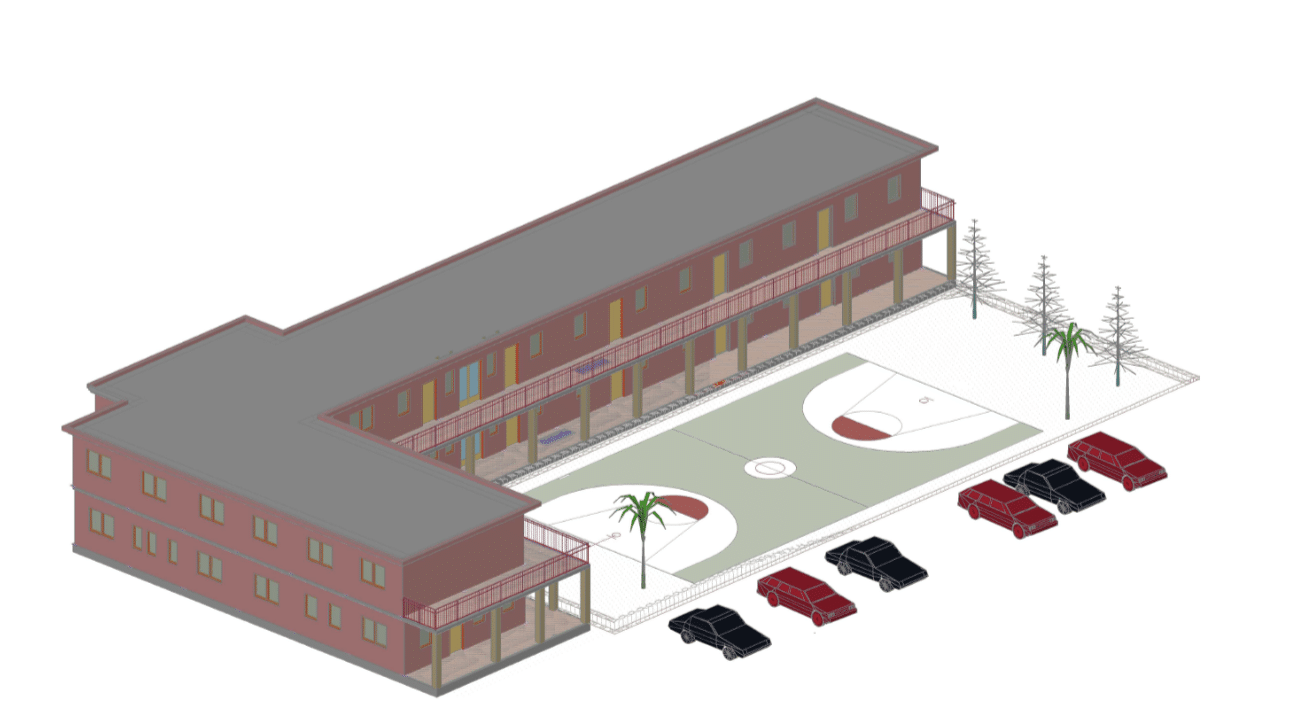We’ve been watching the Weather Channel with the meteorological dedication of Greg Fishel today – and it’s not because of the rainy morning here in Raleigh. As Tomas menacingly looms off the coast of Haiti, we’re bracing ourselves as we watch the effects of this storm – and only wish we could help the people of Haiti do more to prepare.

We’ve gotten reports saying that there are currently strong winds and rain in Zorange and in Port au Prince. School is closed throughout the country, the Port au Prince airport is closing this afternoon and the worst of Tomas is scheduled to hit Haiti late tonight into early Friday morning. The storm has fortunately weakened over this week, but projections say it could reach Category 1 hurricane status before passing over Haiti. Aid workers are scrambling to get people into emergency shelters, but very few exist – even the ones that the Clinton Foundation has built only house 80 people at a time. The government order to evacuate tent cities seems laughable to those living there; there’s no where to go. And people who have clung to their humble but familiar spots of land for nearly a year now are naturally reluctant to leave that behind. There’s nothing easy about this; there are a lot of very vulnerable people trapped in the path of a major storm.
In earthquake-ravaged Port au Prince, the obvious threat is to the 1.3 million people still crammed into tents throughout the crowded city. They have no basement to hide in, no place to ride out the storm. The tent cities are so vulnerable that when a strong storm system (not a hurricane or anything of the sort – just a strong storm) passed over Port au Prince on September 25, five people died from poles and trees falling on the camps. Flash floods are also a huge risk in the crowded city, once again, made more damaging by the lack of shelter. Haiti is extremely mountainous, and almost completely deforested, which means there’s very little to stop runoff into the lower-lying areas.

To make matters worse, Haiti is currently experiencing a rare cholera outbreak that has killed 442 people and infected almost 7,000 others. Because cholera is a waterborne illness, the flooding can cause it to spread quickly. Also, evacuees can bring the disease to areas not previously affected, and damaged infrastructure makes it harder for medical workers to get in with treatment and information about how to prevent the disease. Experts predict that the disease could spread aggressively on the heels of Tomas.
Not to be trite, but it truly is the perfect storm of potentially disastrous effects.
The world’s eyes will be on Port au Prince over the next few days, and rightfully so, but since Hope for Haiti Foundation primarily works in the countryside of Haiti, we wanted to share a little bit about the impact that hurricanes and other storms have where we work. While the storm can still cause significant damage and threaten people’s lives, the implications for rural Haiti are often most dramatic after the storm clears.
Economy
Bainet, the largest city in the area, with 100,000 people, temporarily shuts down. People of this city will not be able to transport their goods to Port-au-Prince, and no goods can come into the city because the buses and the trucks do not operate. The cascading effect is the lack of flour, rice and other goods that come from Port-au-Prince to be sold to the people in the country side. Anyone who does have stock of critical goods hikes their prices up because they can – you can’t escape supply & demand anywhere! Basically, people in rural Haiti can’t sell goods and make money after a hurricane, and they also lose their supply of critical goods from the city.
Medical Care
Medical care will be inaccessible in the event of a hurricane. Because of the flood risk, people will not walk or cross rivers to get to the clinic, even if they need medical treatment. Even on normal rainy days in Haiti, people are afraid they won’t be able to cross the river, or if they get across, that they won’t be able to get back.
School
Most schools will close. Luckily, the HFHF school is aware of which students must cross rivers to get to school. The group is the minority, and we offer excused absences to teachers and students who can’t get to school in the event of a flood. Hopefully we’ll be able to operate fairly normally after the storm.
Food Security
Interestingly, the day after the hurricane, there is plenty of food. Fruit trees shed their fruit in the high winds and rain, and coconuts and other fruits are all over the ground. Unfortunately, once off the tree, this fruit can only last a few days. Without any way to preserve it, the majority of the food supply runs out in a just a few days, and there isn’t any more fruit on the trees to pick. Animals, like goats, pigs and chickens, are often lost, scared off by the winds or washed off by the rain. Hunger can set in quickly after a major storm.

Environment
To a country that’s already struggling with deforestation and erosion, the environmental impact of a storm is huge. Trees are uprooted, often ending up in the ocean.
Elade, our founder, recounts riding out several of these storms while growing up in Haiti:
“I’ve experienced a few of these hurricanes and it is not fun. I remember my home was covered with grass, not tin. It was leaking and one time we were afraid that the house would collapse. I remember thinking of escape routes to take my cousins, away from tall trees, and hide in open fields just to get away from the danger. Now the homes are a little sturdier than before, and perhaps most of them will survive and not collapse, but the fear remains. Life as we know it in the countryside comes to a stop until the sky clears up.”
We’re continuing to track the storm and will provide updates as we have them. Please keep everyone in Haiti in your prayers.




